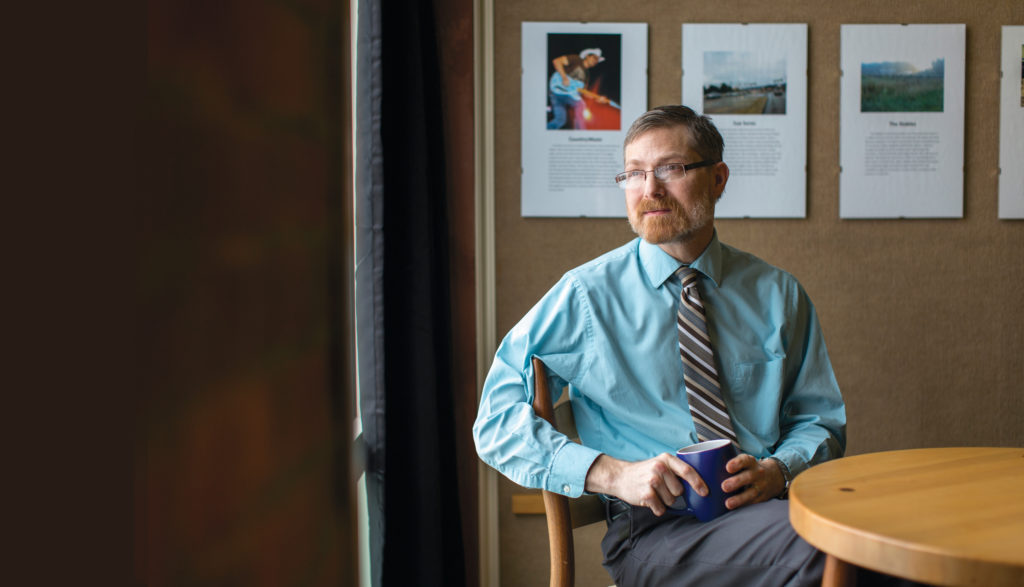Director of the Loyal Jones Appalachian Center
Appalachian Studies Program Chair

What is your understanding of Berea’s commitment to interracial education?
It is at the core of Berea’s definition. I say that, but it is truly at the core of it. It has metamorphosed over time and is undergoing that metamorphosis still because it leads us to ask difficult questions. How do people essentially who have been forced through politics and negative cultural habits to see each other as opposites overcome that and work together to create a better world? Black and white, but not only black and white—it’s also American and non-American, Appalachian and non-Appalachian. I am someone who sees Appalachia as an ethnicity, but you can be black and Appalachian, you can be Hispanic and Appalachian, and you can be from Appalachia but not really feel like you are an Appalachian too. But at its core again, the commitment is about that black/white connection, but through that understanding, seeing how racial discourse works in America, we are looking to heal the wounds created over 500 years on this continent.
How are the commitment to service and the commitment to interracial education connected?
One thing that we have done in the Appalachian Center is we have created the only maps in the nation of the population of African Americans and Hispanics in the Appalachian region. We put those up on our website and the data is there to see and we hope others will use that information to deepen their understanding of the region
One of the most important ways that we also serve at Berea is that we bring in different students from different regions, who are of different races, and this leads to different questions. You can be a black student from Knoxville or you can be an African American student from Knott County, which is in rural Kentucky. So these maps that we make are an important service that allows people to work with their conceptions about race in Appalachia. And it is Berea’s interracial commitment that leads us to have that particular attention. It is not service per-se but it is a path to service; it is an important kind of service of knowledge.
On the Appalachian tour, which is something we take new staff and faculty on hopefully within their first three years here, I have gone out of my way to include more of the diversity of Appalachia. On the last tour, we met with a Hispanic advocacy group, Centro Hispano, in Knoxville and talked about immigration. We also met with African Americans who lead the local NAACP chapter in Knoxville at the Beck Cultural Center, and we visited Lynch, Kentucky, in Harlan County, where we met members of the Greater Mount Sinai Baptist Church, all of whose families had been involved in mining.
It is my job to help our new staff and faculty break down preconceptions about what Appalachia is, so they can see better and work better with people who are there. I know that is what we do best in our center.

